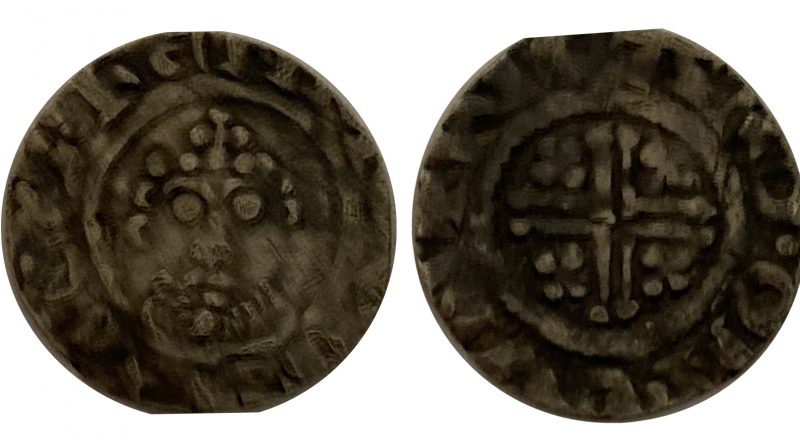Richard I Penny
Over the years detectorists have dug up tens of thousands of voided short cross pennies and cut fractions. The price of cut halfpennies and farthing has plummeted but whole pennies still command quite good prices. Featured here is a reasonably decent short cross penny, which came in from John Lashmar.
This series has been classified by its lettering, punctuations, and various characteristics in regard to the bust on the obverse. John’s find has five pearls in the king’s crown, there are whiskers on the chin but not on the cheeks and there are serifs on the letter N; these clues added together point towards this coin being class II of Richard I. It’s a little unusual for this class in having a distinct mantle to the shoulders on the king. On the reverse the legend reads +RICARD ON LVN, so Ricard is the moneyer and London the mint.
Historical Background
When Richard I died in 1199 the next king should have been Arthur, who was the son of Geoffrey (third son of Henry II), who had died in1186. However, two of the most powerful men in England, Hubert Walter and William Marshal, eventually agreed that John, the fourth son of Henry II, should be king. When Henry II died the coinage of England was strong and was trusted all over Europe. The government seems to have believed that any change in design might have a detrimental impact; therefore, when Richard I came to the throne English coins continued to be struck in the name of Henry. There was no change when John became king, so from 1154 until 1279 every English penny had hENRICVS REX on the obverse.
Valuation
The coin is smooth in places but still good enough to grade Fine for the reign and class, which is rarer than class III and IV. In its present condition I’d price it at £100.
Coin Valuation Service
Have your coin or artefact valued using my free online coin valuation service

